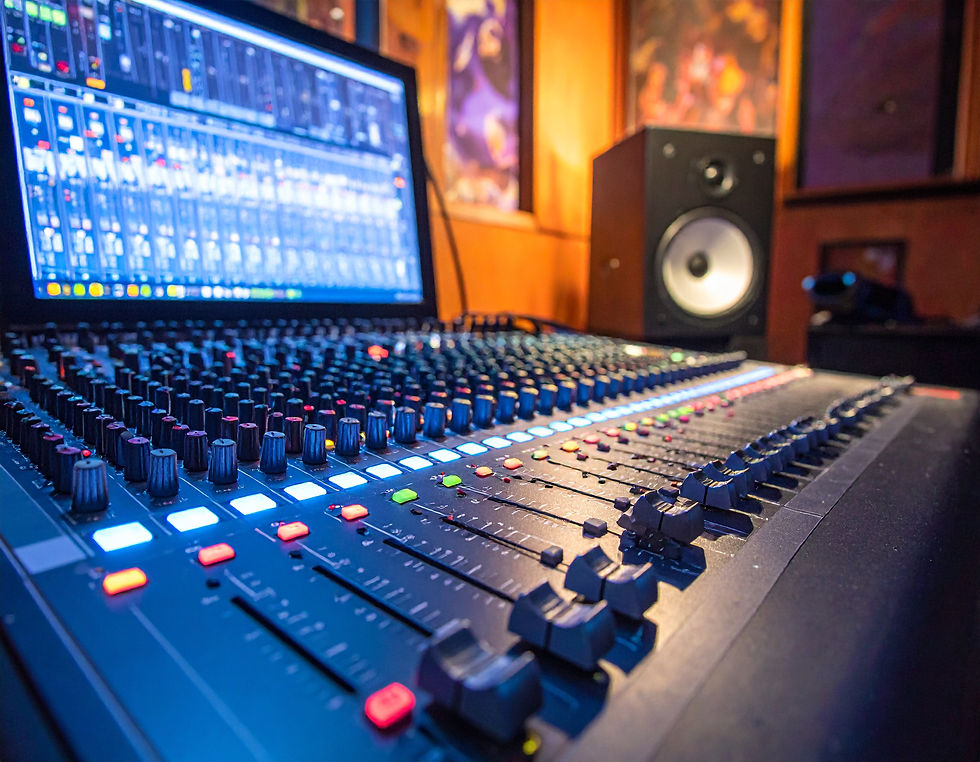Podcast Production: Turning Conversations Into Cinematic Experiences
- arikanidjar
- Sep 22
- 4 min read
In today's fast-paced digital world, podcasts have become one of the most effective ways to share stories and ideas. They engage listeners through personal conversations that often feel like a chat with a friend. Yet, creating a podcast isn't just about talking; it’s about crafting an experience that draws listeners in and keeps them coming back for more. This article delves into the crucial components of podcast production that can elevate a basic discussion into an extraordinary auditory journey.
Understanding the Essence of Podcasting
Podcasting is more than just words; it's about forging a connection. A successful podcast grabs listeners by resonating with their emotions, a connection facilitated through storytelling, sound design, and top-notch production quality.
Listeners are on the lookout for podcasts that both inform and entertain. According to a survey by Edison Research, 80% of podcast listeners feel that podcasts offer unique perspectives on topics they care about. To create content that fulfills this desire, podcasters must deeply understand their audience. Questions to consider include: What topics excite them? What stories make them think? By responding to these questions, creators can adapt their content to align with what audiences genuinely want.

The Importance of Pre-Production
Before the recording starts, pre-production is crucial for setting the stage for a successful podcast. This involves planning content, selecting guests, and creating an episode outline.
A well-structured outline can keep the conversation both focused and engaging. Striking the right balance between being organized and allowing for natural dialogue is key. For example, popular podcasts like "How I Built This" use a semi-structured format that allows the host to guide the conversation while leaving room for spontaneity. Additionally, conducting thorough research on guests and topics can lead to more profound and insightful dialogues.
Crafting Engaging Content
After laying the groundwork, podcast creators must focus on crafting engaging content. This means paying attention to how the conversation unfolds and how it’s presented to the audience.
Using storytelling techniques can greatly enhance the narrative. Starting with a captivating hook or an intriguing question can immediately capture listeners' attention. For instance, "Have you ever wondered how a simple idea can become a billion-dollar company?" can resonate with many eager for inspiration.
Incorporating personal anecdotes and real-life experiences makes content more relatable. For instance, many listeners still resonate with the story of Oprah Winfrey overcoming her rough childhood—an example that inspires and connects with countless people.
Sound design also plays a vital role in elevating the listening experience. Background music, sound effects, and smooth transitions can evoke emotions and set the mood of the episode. A study revealed that 60% of podcast listeners believe that the background score enhances their overall experience. Choosing the right sound elements helps to transport your audience into the story you're telling.

The Art of Editing
Editing is where the podcast truly takes shape. It involves refining raw audio into a polished final product that stands out. This phase includes trimming unnecessary pauses, filler words, and distractions that could disrupt the listening experience.
Additionally, this is the stage where sound design elements are integrated. Adding music, effects, and transitions enhances the storytelling and keeps listeners engaged. Notably, podcasts like "Serial" have shown that dramatic sound editing can significantly elevate the narrative, making content more compelling.
Consistency in audio quality is much more than a technical detail—it's essential for user experience. Ensuring balanced volume levels and removing background noise communicates professionalism and dedication. Research from Podchaser shows that 75% of listeners abandon podcasts due to poor audio quality. Therefore, creators must emphasize quality throughout the editing process.
Promoting Your Podcast
After producing the podcast, promotion becomes the priority to attract listeners. Effective promotion is essential for growing your audience and ensuring that your content reaches the right ears.
Submitting your podcast to directories like Apple Podcasts, Spotify, and Google Podcasts expands your reach. Statistics indicate that listing a podcast on multiple platforms can boost listenership by nearly 30%. Creating a dedicated website can serve as an information hub, providing easy access to episodes, show notes, and other resources.
Engaging with your audience through social media and email newsletters can create a thriving community. Encouraging listener feedback fosters participation, helping you better understand what content resonates. Surveys have shown that podcasts that actively involve their audience often see a 50% increase in listener loyalty.
Final Insights
Podcast production is a nuanced process that requires planning, creativity, and technical know-how. By transforming conversations into cinematic experiences, podcasters can create content that informs, captivates, and inspires their audiences.
From preparation to editing and promotion, each step of the process is critical to the success of a podcast. As the podcasting realm continues to expand, embracing these essential elements helps creators stand out in a competitive landscape.
The ultimate goal is to craft a podcast that resonates deeply with listeners, leaving them eager for future episodes. With commitment and a focus on quality, anyone can turn their conversations into an engaging auditory journey that leaves a lasting impact.





Comments